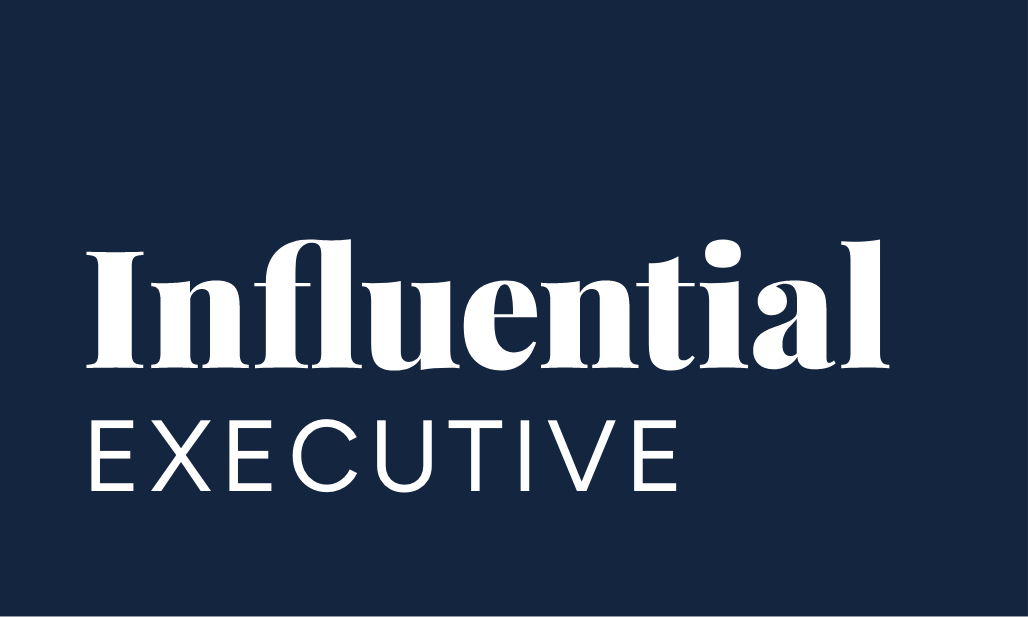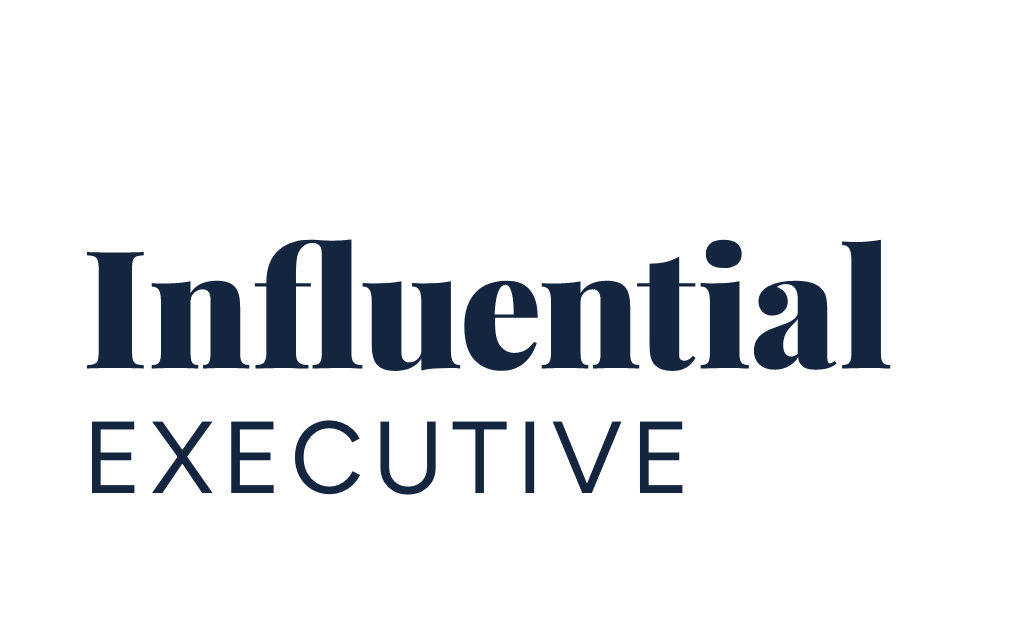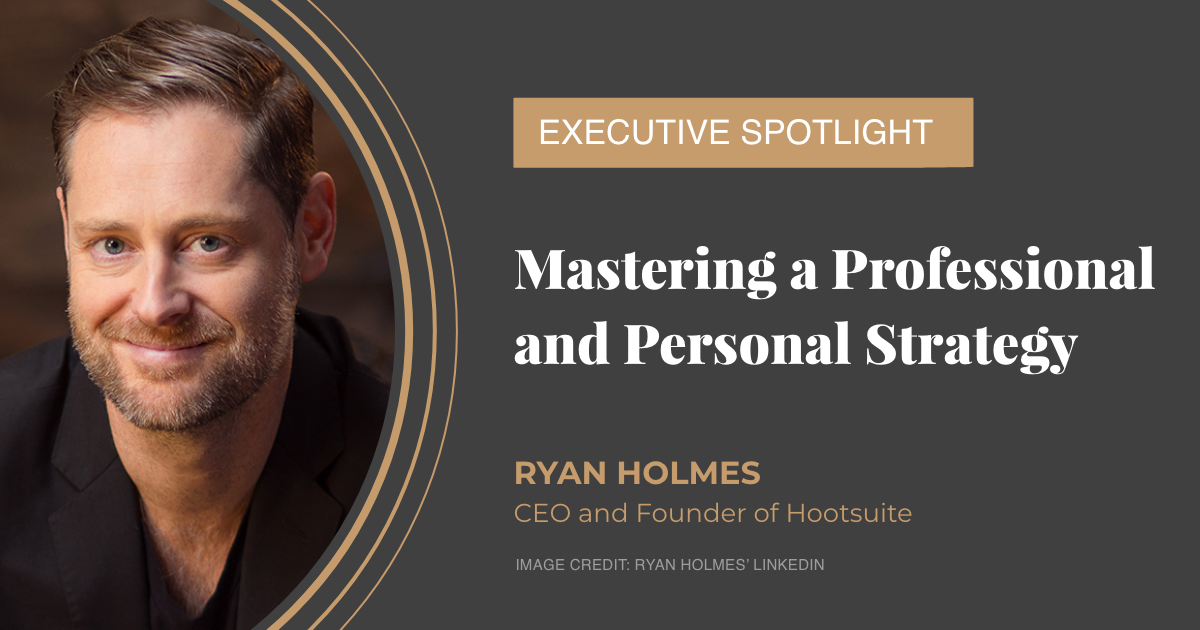Ryan Holmes is a Canadian computer programmer and internet entrepreneur, and best known as the founder and CEO of Hootsuite, a social media management tool for businesses. As an internet entrepreneur who helped create one of the most successful scheduling tools, he is obviously familiar with social media platforms. Continue reading as we examine how Holmes masters the use of LinkedIn, Instagram, and Twitter in very different ways to share both professional and personal content.
An Enterprise-Focused Linkedin
Holmes has more than 1.7 million followers on Linkedin. He is highly active on the platform, posting around twice a week (sometimes up to four times a week). On LinkedIn, we recommend executives post at least three times a week or, if possible, up to once per day. This ensures that their audience stays engaged and active on their social platforms.
Holmes’ Linkedin content is geared towards a more professional and business-oriented audience, such as aspiring entrepreneurs and CEOs. He uses LinkedIn to lift up other entrepreneurs and to celebrate the innovation that is found in young people. This can be seen in his promotion of his League of Innovators venture, a company that seeks to mentor entrepreneurs under the age of 30. Holmes saw a gap in the market where young entrepreneurs were not getting the mentorship they needed to be successful.
The stats are against entrepreneurs who start a business, as half of them close within the first five years, so for Holmes to recognize that young entrepreneurs require support and guidance is commendable. He also used his LinkedIn to share a news story about the first seed financing support venture that LOI (League of Innovators) has taken on called WFHomie. Holmes has effectively leveraged LinkedIn by tapping into its key audience. It’s a platform where professionals can connect, share knowledge and experience, encourage one another and build connections.
While Holmes maintains a business casual yet still professional tone throughout his content, there are times when he can be more casual and inject humor into his posts as well. An example of this was when he gave a shout-out to Ryan Reynolds, who he referred to as “a much cooler Ryan”. On the one hand, it showcases that he’s in tune with popular culture but it also makes Holmes seem more authentic and approachable. He includes some fun emojis that align with the lighthearted tone of the post.
A Personal Diary on Instagram
We turn our attention to another of Holmes’ social media accounts but this time, his content is very different. His Instagram account has more than 42,000 followers. He primarily uses his account as a personal diary, sharing content such as adventures and food, and the important people in his life (his friends, and his family: partner Paola and their children) however there are times where he shares professional accomplishments related to his business.
He captioned his League of Innovators post on Instagram, from December 13th, differently than he did on LinkedIn (which read very professional) and on Twitter (which was very casual and tongue-in-cheek). On Instagram, he not only tagged the person he started the venture with (Manny Padda, the founder of New Avenue Capital), but he also addressed the issue they plan to help solve. We recommend that, whenever possible, executives tag people in their content. When other people are tagged on social media, they are notified and are more likely to share your content, which boosts your online presence and puts your content in front of new audiences.
However, as we mentioned earlier, Holmes’ primarily uses his Instagram account to share personal content. Compared to LinkedIn, Instagram is a much more casual platform that emphases visuals over the copy. An example of a more personal post is the one above where he shares his biking adventure with his audience. Holmes likes to share his passions and adventurous side on Instagram. This type of content works well on Instagram, which is a more casual platform compared to LinkedIn.
Furthermore, his profile bio on Instagram is different from his LinkedIn and somewhat similar to his Twitter account (where he also gives a small glimpse into who he is). On Instagram, his bio reads: “Lover of dogs, owls, inner discovery and outdoor pursuits. Entrepreneur, future enthusiast and founder & chairman @hootsuite @leagueofinnovators.”
He includes the same information on Twitter that he does on his Instagram bio but in a different order (and there is a clear strategy behind that). While Twitter is somewhat less of a professional platform than LinkedIn, it’s still a place where people share and break important news (so there is a level of professionalism about it). But since Instagram is a lot more relaxed, he chooses to share his personal highlights primarily on that account.
Balancing Personal and Professional Content on Twitter
Holmes’ Twitter page has more than 50,000 followers and is, in many ways, a mix of his social media strategy on LinkedIn and Instagram. He uses Twitter similarly to how he uses Linkedin in that he shares professional updates, executive hires, and relevant news stories. He also utilizes some features on the platform to share personal details about himself and his life outside of business.
His profile bio on Twitter reads, “Entrepreneur, investor, future enthusiast, inventor, hacker. I Love dogs, owls and outdoor pursuits. Founder of Hootsuite.” His bio is a great example of an executive who wants to show his personality outside of his business. He doesn’t just want to be a company mouthpiece, but instead, wants to bring some personality to his position and come across as more approachable.
The order in which he lists his accomplishments and interests is very interesting too. He chooses to place his status as an entrepreneur and investor first, then a future enthusiast, then an inventor and hacker. He lists his personal pursuits and interests and includes that he founded Hootsuite at the end. Is this intentional? Absolutely. It speaks to the fact that he’s always inventing, engaging, and connecting. That’s not to say that Hootsuite isn’t important or relevant, but that it’s not everything that defines him as a person and it certainly isn’t the only type of content you’ll see on his feed.
Profile bios on social media are important because they introduce users to the executive. They offer the audience a first impression and therefore must be used effectively to present yourself as a leader with character and personality.
Probably nothing. https://t.co/03qcW3jEc1
— Ryan Holmes (@invoker) December 13, 2021
In terms of his Twitter content, he’s made effective use of many platform features, such as pinning a post in the example shown above. The tongue-in-cheek tone he used was funny and engaging. This post also shows how engaged he is with the Twitter community as he replied to many of the responses that he received.
Improvements: A More Consistent Engagement Strategy
Although Holmes has a successful social media strategy on LinkedIn, Instagram, and Twitter, there is room for improvement on each platform that could make his content stand out even more.
Compared to LinkedIn and Twitter, posting is less consistent on Instagram. While daily posting is recommended across social media platforms, this may be difficult as a busy executive. For those who don’t have time to fully coordinate their own social media profile, we recommend working with your company’s marketing team or an external agency to support your content creation and social media strategy.
More consistent use of hashtags is also an improvement Holmes can make. Hashtags help connect your content to a wider audience and can help boost your post’s view count.
Ryan Holmes, a Master of Balancing Professional and Personal Content
Holmes has mastered the balance of sharing his professional and personal life on social media. He uses LinkedIn, Instagram, and Twitter effectively, and executives can learn a lot from his social media strategy.
Holmes shows how executives can use social media to tell a professional and personal story in an approachable way, rather than just be used as a sounding board to share company-related content. When it comes to content that might otherwise sound dry, he’s able to put a spin on it by infusing his social media posts with his unique personality. This technique offers his audience insight into who he is and keeps them interested in what he says going forward.
Executives, are you looking to establish your online presence across multiple social media platforms? For those of you in highly regulated industries, such as finance, going on social media and sharing content can seem daunting. That doesn’t mean you should stay offline! Click below to read a case study about how we helped one CEO in the financial industry achieve an engagement rate that was 95% higher than the company’s content.
Here’s how we helped a CEO in the financial industry!


